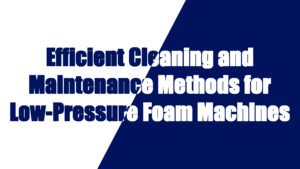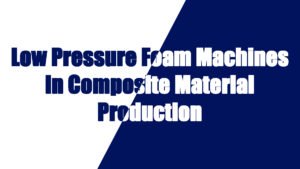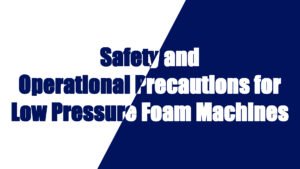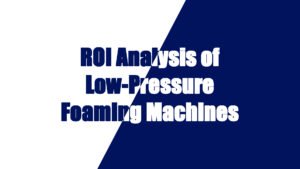In the packaging industry, polyurethane, paper, plastic and metal are the main packaging materials. Each material has different market share, advantages, disadvantages and application areas. The following is a comparison of the market data of these materials to understand the position of polyurethane in the packaging industry and its development potential.
Global Packaging Materials Market Overview
According to a report by market research institutions Grand View Research Dan MarketsandMarkets, the size of the global packaging materials market reached $1.2 trillion in 2023 and is expected to grow to $1.7 trillion by 2030, with an average annual growth rate of about 5.6%.
Among packaging materials, the market share of plastics, paper, metals and polyurethanes is as follows:
Packaging Materials | Market Share (2023) | Estimated Market Size in 2028 | Average Annual Growth Rate (CAGR) |
Plastics | Tentang 40% | Tentang $700 billion | Tentang 5.4% |
Paper | Tentang 30% | Tentang $500 billion | Tentang 4.9% |
Metals | Tentang 10% | Tentang $180 billion | Tentang 3.7% |
Polyurethane | Tentang 6%-8% | Tentang $24 billion | Tentang 7.5% |
Polyurethane vs Other Materials
The packaging industry demands materials that are lightweight, durable, cost-effective, and versatile for a variety of applications, from protective packaging to consumer goods. Polyurethane (PU) is widely used in this sector due to its strength, flexibility, and insulating properties. However, it competes with other materials like Polyethylene (PE), Polypropylene (PP), Polyvinyl Chloride (PVC), Dan Paper-based materials. Each material has specific strengths and weaknesses, depending on the application.
Materials Comparison Table:
| Property | Polyurethane (PU) | Polyethylene (PE) | Polypropylene (PP) | Polyvinyl Chloride (PVC) | Paper-based Materials |
|---|---|---|---|---|---|
| Density (g/cm³) | 1.1 – 1.3 | 0.91 – 0.96 | 0.90 – 0.92 | 1.3 – 1.4 | 0.5 – 1.2 |
| Tensile Strength (MPa) | 40 – 50 | 20 – 40 | 30 – 50 | 40 – 60 | 3 – 7 |
| Elongation at Break (%) | 500 – 800% | 200 – 800% | 300 – 600% | 100 – 300% | 10 – 15% |
| Hardness (Shore A) | 60 – 95 | 40 – 80 | 50 – 80 | 60 – 80 | N/A |
| Abrasion Resistance | Excellent | Moderate | Good | Moderate | Low to moderate |
| Impact Resistance | Excellent, high rebound | Moderate | Moderate to high | Low | Low to moderate |
| Chemical Resistance | Excellent, resistant to oils, solvents, and acids | Moderate, resistant to many chemicals | Good, resistant to oils and solvents | Good to moderate, prone to degradation | Poor, highly sensitive to chemicals |
| Temperature Resistance | -40°C to 80°C | -50°C to 80°C | -20°C to 100°C | -10°C to 60°C | -40°C to 120°C |
| Flexibility | High, flexible for molding and forming | High, flexible, durable | Moderate to high flexibility | Moderate flexibility | Low to moderate flexibility |
| Water Resistance | Excellent, moisture resistant | Excellent, moisture resistant | Moderate | Poor | Poor |
| Barrier Properties | Excellent (air, moisture, and gas barriers) | Good (moisture, gas barrier) | Good (moisture, air barrier) | Good (moisture, but permeable to gases) | Moderate (depending on coating) |
| Recyclability | Difficult to recycle | High (widely recycled) | High (widely recycled) | Moderate (PVC recycling is limited) | High (biodegradable and recyclable) |
| Cost | Moderate to high | Low | Low to moderate | Low to moderate | Low |
| Applications in Packaging | Insulated packaging, protective foams, cold chain packaging, flexible packaging | Food packaging, bags, shrink films, flexible packaging | Rigid containers, caps, packaging for consumer goods | Rigid packaging, medical packaging, shrink wraps | Corrugated boxes, cartons, paper bags, molded pulp |
Detailed Analysis:
1. Polyurethane (PU):
- Advantages:
- Abrasion Resistance: Polyurethane is known for its excellent abrasion resistance, which makes it ideal for protective packaging (e.g., foam inserts, cushioning materials) that needs to withstand mechanical stress.
- Impact Resistance: PU has high impact resistance and can absorb shock well, providing superior protection to fragile items during transit. This makes it useful in cold chain packaging, protective foams, Dan insulated boxes.
- Barrier Properties: PU has superior moisture and gas barrier properties, making it ideal for food packaging (e.g., fresh produce, perishable goods) and medical packaging that require an airtight seal.
- Flexibility: Polyurethane’s flexibility makes it suitable for molded products, which are common in packaging for irregularly shaped or fragile items.
- Disadvantages:
- Cost: PU tends to be more expensive than many other packaging materials like polyethylene and polypropylene. This can limit its use in cost-sensitive applications.
- Recycling: Polyurethane is difficult to recycle and often ends up in landfills, which raises environmental concerns, especially in large-scale packaging use.
2. Polyethylene (PE):
- Advantages:
- Low Cost: PE is one of the most cost-effective packaging materials, making it the go-to choice for large-scale packaging applications, such as food packaging, plastic bags, Dan shrink films.
- Moisture Resistance: Polyethylene has excellent resistance to water and moisture, which makes it suitable for packaging that needs to protect products from environmental conditions, especially in food packaging.
- Recyclability: PE is widely recycled and has a high recycling rate, making it more environmentally friendly compared to polyurethane.
- Disadvantages:
- Chemical Resistance: While PE is resistant to many chemicals, it is more vulnerable to degradation from oils and solvents than polyurethane.
- Abrasion Resistance: PE has moderate abrasion resistance, which makes it less ideal for applications where wear or tear is a concern, like protective foams or rigid packaging.
3. Polypropylene (PP):
- Advantages:
- Cost-Effective: Like polyethylene, polypropylene is affordable, making it ideal for rigid containers, caps, Dan consumer goods packaging.
- Flexibility: Polypropylene offers good flexibility, making it suitable for wrapping Dan kemasan items that require some form of pliability without compromising on strength.
- Chemical Resistance: PP has good resistance to oils, solvents, and acids, which makes it suitable for packaging products sensitive to chemicals.
- Disadvantages:
- Impact Resistance: Polypropylene has lower impact resistance compared to materials like PU or rubber, which means it’s not as suitable for protective kemasan that needs to absorb shocks and impacts.
- Barrier Properties: While it offers good resistance to moisture, it has lower gas and air barrier properties compared to polyurethane or polyethylene, making it less ideal for packaging products requiring a high level of protection against oxygen or contaminants.
4. Polyvinyl Chloride (PVC):
- Advantages:
- Barrier Properties: PVC offers good moisture barrier properties, and its rigid nature makes it a good choice for medical packaging, blister packs, Dan shrink wraps.
- Cost-Effective: PVC is affordable and widely available, making it suitable for mass-produced packaging solutions.
- Disadvantages:
- Flexibility: PVC is more rigid and not as flexible as other materials like PU and PE, which can make it less ideal for applications that require flexibility, such as protective foams or custom-molded packaging.
- Chemical Sensitivity: PVC is prone to degradation when exposed to certain chemicals, which limits its use in packaging sensitive materials.
- Recycling: PVC is less commonly recycled compared to PE or PP, which can raise environmental concerns.
5. Paper-based Materials:
- Advantages:
- Cost: Paper-based materials, such as cardboard Dan molded pulp, are inexpensive and widely used in the packaging industry.
- Environmental Benefits: Paper is biodegradable and recyclable, making it a more sustainable option compared to synthetic materials like PU and PVC.
- Versatility: Paper-based materials can be used for a wide range of packaging applications, including corrugated boxes, cartons, paper bags, Dan molded pulp trays.
- Disadvantages:
- Strength and Durability: Paper is not as strong or durable as synthetic materials, especially in high-moisture or high-impact environments.
- Moisture Resistance: Unless treated or coated, paper can absorb moisture, leading to degradation in humid environments. It’s also prone to tearing compared to more robust synthetic options like PU and PE.
Summary:
Polyurethane (PU)
- Pros: Excellent abrasion resistance, impact resistance, Dan barrier properties. Ideal for protective packaging, insulated packaging, Dan cold chain applications. Superior chemical resistance and flexible for molded applications.
- Cons: Higher cost Dan difficult recycling compared to other materials.
Polyethylene (PE)
- Pros: Cost-effective, moisture resistant, and widely recycled. Commonly used in food packaging, bags, Dan shrink wraps.
- Cons: Moderate abrasion resistance Dan chemical resistance compared to PU. Not suitable for high-stress, high-wear applications.
Polypropylene (PP)
- Pros: Terjangkau, flexible, and has good chemical resistance. Suitable for rigid containers Dan consumer goods packaging.
- Cons: Lower impact resistance Dan barrier properties compared to PU and PE.
Polyvinyl Chloride (PVC)
- Pros: Good moisture barrier Dan rigid packaging. Useful in medical packaging, blister packs, Dan shrink wraps.
- Cons: Rigid, with lower flexibility and recycling challenges. Chemical degradation is a concern in some applications.
Paper-based Materials
- Pros: Environmentally friendly, cost-effective, Dan biodegradable. Commonly used for boxes, cartons, Dan molded pulp.
- Cons: Limited strength, moisture sensitivity, Dan lower durability in demanding conditions.
Conclusion:
- Polyurethane is the best option for high-performance applications where abrasion resistance, impact resistance, Dan chemical protection are critical, such as in cold chain packaging, protective foams, Dan specialized insulating packaging.
- Polyethylene Dan Polypropylene are suitable for cost-effective, flexible packaging, with PE being ideal for moisture-sensitive packaging and PP for rigid consumer goods.
- PVC is best for rigid applications like medical packaging, but it has limitations in terms of flexibility Dan recycling.
- Paper-based materials offer an environmentally friendly, cost-effective option, especially for non-durable packaging applications like boxes Dan bags but may not perform well under extreme conditions.
Each material has its ideal use case, with polyurethane standing out for its versatility in high-performance packaging applications.



































